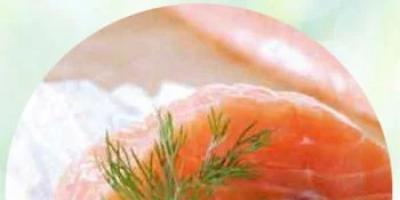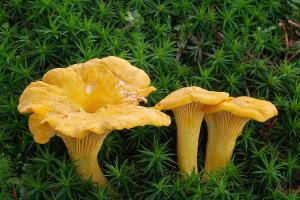Hello, my dear summer residents!
I want to tell you about a wonderful spicy plant -. Once you plant on your site, you will never regret it.
This plant appeared for the first time in our summer cottage about 10 years ago. A friend of hers, a summer resident, gave my mother the “root” and told her about its beneficial properties and how to care for it.
We planted it and it grew beautifully for a whole year. And then, due to various other concerns and problems, we simply forgot about hyssop.
Without proper care, even though he doesn't need much, we eventually lost him.
And last year, while leafing through a catalog of seeds, I came across hyssop seeds. Of course, I immediately ordered them and, since then, several beautiful hyssop bushes have been growing on our summer cottage.
And now I never forget to look after them and devote time to them. Hyssop is a real decoration of my garden and a most valuable medicinal plant.

Hyssop is a perennial subshrub plant with a strong spicy aroma and taste, 50-70 cm high, with small blue, purple or even pink flowers.
In the wild, it is found in Mediterranean countries, the foothills of Altai, Crimea, and Kazakhstan.
In our gardens, hyssop is grown as a spicy and excellent ornamental plant. The popular names of this plant are blue St. John's wort, hyssop grass, susop, juzefka.
Hyssop bushes look very nice strewn with flowers, over which bees are constantly buzzing, since hyssop is also an excellent honey plant.
It blooms for a very long time from June to October, until frost. It is enough to plant only 4-5 bushes of this plant on the site and you will be provided with spicy herbs.
Hyssop is also good because it can be cut for drying several times during the season and it quickly grows back.
Young shoots with leaves and buds can be used for food; they taste and smell very pleasant.
I use hyssop as a seasoning for many salads, vegetable soups and sauces, as well as fish and meat dishes.
It is also very suitable for flavoring liqueurs, tinctures, all kinds of pickles and marinades.
Healing properties

Hyssop is also a very valuable medicinal plant, the healing properties of which were known at the beginning of the fourteenth century.
Around 1305, the then famous physician Arnold of Villanova created the poem “The Salermo Code of Health,” which he dedicated to medicinal herbs.
And it contains these lines about this amazing plant:
“The chest is cleared of phlegm by a herb called hyssop.
Hyssop is beneficial for the lungs if it is boiled with honey,
And they say that it gives an excellent color to the face.”
For medicinal purposes, the tops of flowering shoots of hyssop, which are harvested at the beginning of flowering, are usually used.
To prepare infusions and decoctions, you can use them both fresh and dried.
Hyssop is used as a wound healing agent to treat eczema, bruises, bruises and wounds.
For example, to resolve bruises, we make lotions from an infusion of hyssop herb.
To prepare it, you need to place two teaspoons of dry raw materials in an enamel bowl, pour one glass of boiling water and leave for 30 minutes. Then cool the infusion and strain.
Hyssop is also very helpful for coughs. Pour 2 teaspoons of fresh hyssop herb with one glass of water, bring to a boil over low heat and leave for 5 minutes.
If you are using already dried hyssop, then to prepare the infusion you need to take 2 teaspoons of dry raw material and pour 1 glass of boiling water and leave for 15 minutes. Then strain and take 0.5 glasses of this drink half an hour before meals or one hour after meals.
This helps not only to remove sputum, but also to reduce the temperature. And if you add 1 teaspoon of honey to this drink (decoction or infusion), this will significantly enhance the healing effect of hyssop.
The infusion can also be used at the first sign of a sore throat to gargle.
And fresh flowers and hyssop leaves stimulate the appetite.
It is also used for heart disease (angina), neurosis, problems with the gastrointestinal tract, rheumatism, conjunctivitis, and bronchial asthma.
Growing Hyssop

Growing hyssop is not at all difficult. This plant is extremely undemanding and grows well even on not very fertile soil, but you should not forget about it.
Hyssop reproduces both by seeds and by dividing the bush.
Growing hyssop from seeds is not a lot of work, but you still need to know a few subtleties.
You can sow seeds directly into the ground or grow hyssop through seedlings. I liked the method of growing through seedlings better.
In early spring, I sow hyssop seeds in the greenhouse in seedling boxes, lightly sprinkling them with soil.
If the weather is still cold and sometimes there are even night frosts, I additionally cover the boxes with film.
When the seedlings have grown and the threat of frost has passed, I plant hyssop seedlings in the ground on permanent place.
I dig up the soil for planting in advance and loosen it to a fine lump state.
I plant seedlings in the garden. You can, of course, plant hyssop on flat surface, but I prefer to plant everything in beds, since it is much easier to process the plants.
The width between the rows is 25-30 cm, and the plants themselves are at a distance of 8-10 cm from each other.
It is very easy to care for hyssop; you just need to regularly weed it, water it, loosen it, and feed it (especially in the first months of life).
If the growth of hyssop is slow, it is recommended to feed it with a mixture of mineral fertilizers (20-30 g per 10 liters of water), but I still prefer to feed it with organic fertilizers.
In one place, hyssop can grow well for up to 4-5 years. It doesn’t even require shelter for the winter, although I still mulch it with peat (or other mulch) for the winter - just in case.

Dear summer residents, I highly recommend planting this wonderful plant on your plot, I repeat once again, you won’t regret it!
Plant medicinal hyssop (lat. Hyssopus officinalis), or common hyssop, or blue St. John's wort- a species of the genus Hyssop of the Lamiaceae family, a subshrub that grows wild in North Africa, Western Asia, Central, Southern and Eastern Europe. In culture, hyssop is grown in North America and almost throughout Europe. The herb hyssop is the oldest medicinal plant, which was used to treat patients by Hippocrates and Dioscorides. Young shoots of hyssop with leaves, fresh and dried, are used as a spicy seasoning for appetizers, first and second courses. Hyssop is also included in dietary dishes.
At the very beginning of the 14th century, the famous physician Arnold of Villanova wrote the poem “The Salermo Code of Health,” dedicated to medicinal plants. About hyssop it contains the following lines:
“The chest is cleared of phlegm by a herb called hyssop.
Hyssop is beneficial for the lungs if it is boiled with honey,
And they say that it gives an excellent color to the face.”
Planting and caring for hyssop (in brief)
- Bloom: from June to October.
- Landing: sowing seeds in open ground- in April or May, sowing seeds for seedlings - in the first half of March, planting seedlings in open ground - in the second half of May.
- Lighting: bright sunlight.
- The soil: moderately moist, well-drained, calcareous and pre-fertilized.
- Watering: only during prolonged drought, consumption per 1 m² of land is 15-20 liters of water.
- Feeding: only if necessary, with a solution of complex mineral or organic fertilizer.
- Trimming: simultaneously with the collection of medicinal raw materials.
- Reproduction: seed, including self-sowing.
- Pests: don't hit.
- Diseases: rust, rhizoctonia, fusarium wilt or white spot.
- Properties: is a medicinal plant with expectorant, antipyretic, antiseptic, diuretic, bactericidal, laxative, analgesic, antimicrobial, anthelmintic, wound-healing and stimulating effects.
Read more about growing hyssop below.
Hyssop plant - description
The root of hyssop is woody, the stems are branched, tetrahedral, short-haired or almost bare, twig-like, woody at the base, 45 to 70 cm long. The leaves are almost sessile, opposite, short-petiolate, lanceolate, entire, 2 to 4 cm long and 4 cm wide. up to 9 mm. Small two-lipped purple, blue, white or pink flowers, located 3-7 pieces in the leaf axils, form an apical spike-shaped inflorescence. Hyssop continues to bloom from June to October. The aroma of the plant attracts bees to the garden: any type of hyssop is a honey plant. Hyssop seeds, which ripen in the second half of August, remain viable for three to four years. Possessing a strong spicy aroma, the plant remains green even with the onset of winter.
Hyssop is a popular culinary spice and a universal medicine.
Sowing hyssop seeds
How to grow hyssop? Hyssop is propagated by dividing the bush and by seeds. Seeds can be sown in open ground in April-May, or you can first grow hyssop seedlings, for which the seeds, without prior stratification, are sown in seedling boxes with fertile soil in the first half of March, in grooves located at a distance of 5-10 cm from each other. Contains crops covered with transparent plastic film, in a warm place.

Caring for hyssop seedlings
Shoots appear in a couple of weeks. Caring for hyssop during the seedling period consists of regularly moistening the soil and fertilizing. At the stage of development, seedlings have 5-6 true leaves; they are planted in open ground, but two weeks before planting, the seedlings are hardened by exposing them to open air. At first, the hardening session lasts no more than half an hour, but gradually the duration of such “walks” increases until hyssop from seeds can stay in the new environment for a whole day.
Planting hyssop in open ground
Soil for hyssop
Hyssop can grow in one place for up to 10 years, so you need to choose a site for the plant responsibly. Hyssop loves the sun and moderately moist, well-drained calcareous soil, into which manure, potassium salt and a little superphosphate are added in advance, in the fall, for deep digging. Unsuitable for the plant are saline and swampy areas, as well as those where groundwater lie too close to the surface.

How and when to plant hyssop
Hyssop is planted in open ground at the age of 45-60 days in the second half of May, when the threat of return frosts has passed. Hyssop is planted in loose soil in increments of 8-10 cm with row spacing of 25-30 cm. After planting, the area is watered.
How to grow hyssop
Hyssop care
Growing hyssop is a simple and enjoyable task. All you need to do is water it occasionally, loosen the soil around the bushes, remove weeds at first and add fertilizer to the soil. Hyssop is watered only during prolonged drought, spending 15-20 liters of water per m² of plot, but usually the plant looks fresh even in severe dryness, and natural precipitation is sufficient for it.
If it seems to you that hyssop is growing slowly, feed it with a solution of complex mineral fertilizer at the rate of 20-30 g per 10 liters of water, although it is better to use organic fertilizers. If the plant does not bloom well, this means that the soil is oversaturated with fertilizers, and hyssop does not like this.
Formative pruning of hyssop is usually combined with the preparation of medicinal raw materials. The plant tolerates cutting easily and grows back quickly after it. The plant overwinters without shelter. In autumn, hyssop shoots are cut at a height of 10-15 cm. This is done in order to stimulate abundant flowering and the formation of a dense bush in the next growing season.

If you grow hyssop as a medicinal raw material, try to avoid self-sowing as this weakens healing properties plants. To avoid self-seeding, you need to carry out regular weeding and cut the bush before the seeds begin to ripen.
Although hyssop can live in one place for a decade, after 4 years it begins to bloom worse, so you should rejuvenate the plant by cuttings or dig up, divide and transplant the hyssop bushes to a new place.
Pests and diseases of hyssop
Hyssop is extremely disease and pest resistant, but can sometimes be affected by rust, rhizoctonia, fusarium wilt or white spot. You can destroy pathogens by treating hyssop with fungicides, but if you follow crop rotation and plant care rules, hyssop is unlikely to get sick. Don't forget after autumn pruning remove plant debris from the site.
As for pests, the smell of hyssop repels them not only from the area with the plant, but also from crops growing in the vicinity of the hyssop.
What to plant after hyssop
After hyssop you can plant beans, peas, potatoes, tomatoes, onions and garlic.
Cretaceous hyssop appearance does not differ from medicinal hyssop: it is also a subshrub, reaching a height of 20 to 50 cm. Blue flowers Cretaceous hyssop produces a strong balsamic odor. This rare plant settles on Cretaceous deposits and is listed in the Red Book of Ukraine.
Anise hyssop is also a subshrub with a height of 50 to 110 cm. The green leaves of this species with purple-brown markings have a pleasant anise aroma, which becomes brighter when the leaves are rubbed. Hyssop flowers have an aniseed, lavender hue; they are edible and used as an ingredient in salads.
As for medicinal hyssop, a description of which we gave at the beginning of the article, the most famous are the following varieties of this plant:
- Chord– mid-season, disease resistant frost-resistant variety with pink flowers;
- Pink fog– also a mid-season variety with flowers of a soft pink hue, characterized by drought resistance, heat resistance and cold resistance;
- Amethyst– a plant 30-35 cm high with a bush diameter of 40-50 cm. Pink flowers bloom in late summer and fade in late autumn;
- Frost– mid-season productive variety with white flowers;
- Otradny Semko- semi-spreading bush 50-60 cm high with small dark blue flowers.

In addition to those described, popular varieties of medicinal hyssop are Pink Flamingo, Rassvet, Lekar, Nikitsky white and others.
Properties of hyssop - harm and benefit
Medicinal properties of hyssop
The beneficial properties of hyssop have been used by mankind for a long time. The plant contains a large number of vitamins: A, B, C, E, K, D and PP. The leaves and roots of hyssop are rich in iron, copper, manganese, potassium, selenium, chlorine, silicon, fluorine, tungsten and boron. Hyssop also contains tannins, bitterness, aldehydes, oleanolic and ursolic acids, flavonoids, alcohols and essential oils. Varieties with white flowers contain maximum amount essential oil, and varieties with pink flowers - minimal.
Hyssop has an expectorant, antipyretic, antiseptic, diuretic, bactericidal, laxative, analgesic, antimicrobial, anthelmintic, wound-healing and stimulating effect. Hyssop is used for infectious and colds, diseases of the oral cavity and respiratory tract, inflammation of the urinary tract, rheumatism, neuroses, angina pectoris, colitis, bloating, conjunctivitis and skin diseases.

For healing purposes, not only leaves and roots are used, but also hyssop flowers, which are dried and added to tea for various diseases, but most often hyssop preparations such as decoction, tincture or infusion are used. The tincture is used for gastrointestinal diseases, for the treatment of hematomas, wounds, burns and other skin injuries. Hyssop infusions are used to gargle for stomatitis and wash the eyes for conjunctivitis. Decoctions are used to treat the upper respiratory tract, colds and inflammation of the urinary tract. Tea with hyssop is useful for coughs, colds and sore throats; it increases blood pressure, lowers temperature and calms the nerves.
Hyssop - contraindications
Since hyssop is a slightly poisonous plant, it should be consumed in medicinal purposes and should be eaten with caution. This contraindication of hyssop makes it necessary to consult a doctor before taking it, since in large doses and with prolonged use, hyssop can cause spasms. It is not recommended to use hyssop for pregnant women, children under 12 years of age, people suffering from kidney disease, hypertension or high stomach acidity. Hyssop is also contraindicated for nursing mothers, since hyssop contains components that can reduce and even completely stop lactation.
- Back
Our grandmothers, growing garden strawberries, or strawberries, as we used to call them, did not particularly worry about mulching. But today this agricultural technique has become fundamental in achieving high quality berries and reducing crop losses. Some might say it's a hassle. But practice shows that labor costs in this case pay off handsomely. In this article we invite you to get acquainted with the nine the best materials for mulching garden strawberries.
Succulents are very diverse. Despite the fact that “little ones” have always been considered more fashionable, the range of succulents with which you can decorate modern interior, it’s worth taking a closer look. After all, colors, sizes, patterns, degree of prickliness, impact on the interior are just a few of the parameters by which you can choose them. In this article we will tell you about the five most fashionable succulents that amazingly transform modern interiors.
The Egyptians used mint as early as 1.5 thousand years BC. It has a strong aroma due to the high content of various essential oils, which are highly volatile. Today, mint is used in medicine, perfumery, cosmetology, winemaking, cooking, ornamental gardening, and the confectionery industry. In this article we will look at the most interesting varieties of mint, and also talk about the features of growing this plant in open ground.
People began growing crocuses 500 years before our era. Although the presence of these flowers in the garden is fleeting, we always look forward to the return of the harbingers of spring next year. Crocuses are one of the earliest primroses, whose flowering begins as soon as the snow melts. However, flowering times may vary depending on the species and varieties. This article is dedicated to the earliest varieties of crocuses, which bloom in late March and early April.
Cabbage soup made from early young cabbage in beef broth is hearty, aromatic and easy to prepare. In this recipe you will learn how to cook delicious beef broth and cook light cabbage soup with this broth. Early cabbage It cooks quickly, so it is placed in the pan at the same time as other vegetables, unlike autumn cabbage, which takes a little longer to cook. Ready cabbage soup can be stored in the refrigerator for several days. Real cabbage soup turns out tastier than freshly prepared cabbage soup.
Looking at the variety of tomato varieties, it’s hard not to get confused - the choice is very wide today. Even experienced gardeners He's annoying sometimes! However, understanding the basics of selecting varieties “for yourself” is not so difficult. The main thing is to delve into the peculiarities of the culture and start experimenting. One of the easiest groups of tomatoes to grow are varieties and hybrids with limited growth. They have always been valued by those gardeners who do not have much energy and time to care for their beds.
Once very popular under the name of indoor nettle, and then forgotten by everyone, coleus today is one of the brightest garden and indoor plants. It is not for nothing that they are considered stars of the first magnitude for those who are primarily looking for non-standard colors. Easy to grow, but not so undemanding as to suit everyone, coleus require constant monitoring. But if you take care of them, bushes made of velvety unique leaves will easily outshine any competitor.
Salmon backbone baked in Provençal herbs provides tasty pieces of fish pulp for a light salad with fresh wild garlic leaves. The champignons are lightly fried in olive oil and then water it apple cider vinegar. These mushrooms are tastier than regular pickled ones, and they are better suited for baked fish. Wild garlic and fresh dill get along well in one salad, highlighting each other’s aroma. The garlicky pungency of wild garlic will permeate both the salmon flesh and mushroom pieces.
A coniferous tree or shrub on a site is always great, but a lot of conifers is even better. Emerald needles of various shades decorate the garden at any time of the year, and phytoncides and essential oils released by plants not only aromatize, but also make the air cleaner. As a rule, most zoned adults coniferous plants, are considered very unpretentious trees and shrubs. But young seedlings are much more capricious and require proper care and attention.
Sakura is most often associated with Japan and its culture. Picnics in the canopy flowering trees have long become an integral attribute of welcoming spring in the Land of the Rising Sun. Financial and academic year here it starts on April 1, when the magnificent cherry blossoms bloom. Therefore, many significant moments in the life of the Japanese take place under the sign of their flowering. But sakura also grows well in cooler regions - certain species can be successfully grown even in Siberia.
I am very interested in analyzing how people's tastes and preferences for certain foods have changed over the centuries. What was once considered tasty and was an item of trade, lost its value over time and, conversely, new fruit crops conquered their markets. Quince has been cultivated for more than 4 thousand years! And even in the 1st century B.C. e. About 6 varieties of quince were known, and even then methods of its propagation and cultivation were described.
Delight your family and prepare themed cottage cheese cookies in the shape of Easter eggs! Your children will be happy to take part in the process - sift the flour, combine all the necessary ingredients, knead the dough and cut out intricate figures. Then they will watch with admiration as pieces of dough turn into real Easter eggs, and then with the same enthusiasm they will eat them with milk or tea. How to make such original cookies for Easter, read our step by step recipe!
Among tuberous crops, there are not so many decorative deciduous favorites. And caladium is a true star among the variegated inhabitants of interiors. Not everyone can decide to own a caladium. This plant is demanding, and first of all, it requires care. But still, rumors about the extraordinary capriciousness of caladiums are never justified. Attention and care can avoid any difficulties when growing caladiums. And the plant can almost always forgive small mistakes.
We have prepared a hearty, incredibly appetizing and simply easy-to-prepare dish for you today. This sauce is one hundred percent universal, as it goes with every side dish: vegetables, pasta, or anything. Chicken and mushroom gravy will save you in moments when you don’t have time or don’t want to think too much about what to cook. Take your favorite side dish (you can do this in advance so everything is hot), add some gravy and dinner is ready! A real lifesaver.
Among the many different varieties of these most popular vegetables, we will tell you about three that are distinguished by their excellent taste and relatively unpretentious conditions growing. Characteristics of the eggplant varieties “Almaz”, “Black Beauty” and “Valentina”. All eggplants have medium-density pulp. In Almaz it is greenish, while in the other two it is yellowish-white. What unites them good germination and excellent yield, but in different time. Everyone's skin color and shape are different.
Hyssop can reach a height of up to 70 cm, has 3 colors - pink, white and blue. Leaves and flowers have the ability to secrete essential oil spicy aroma, due to which this plant has become widely used in cooking, cosmetology and for medicinal purposes. IN landscape design It is grown as an ornamental plant in single or group plantings; it will rightfully occupy the main place in the garden, among the stones or along the path. Hyssop is a very strong honey plant, bees literally stick to it, and this in turn can become a reason for beekeeping. Flowering occurs between June and October, after which the plant forms fruits (nuts). The seeds are very small and remain viable for 3-4 years. Germination percentage 80%.
In general, growing and caring for hyssop is not difficult, except that planting it requires loose, light soil.
Place and soil
Choose a site for planting hyssop that is sunny, in the shade. active growth will not be. This is a drought-resistant shrub; it will not be comfortable in clay or wetlands. Acidic soils. Due to the tannins released, hyssop is not planted near vegetable crops. In the fall, rotted manure, superphosphate and potassium salt are added under deep digging of the soil, and the area is cleared of weeds. If it was not possible to apply fertilizer in the fall, then in the spring every square meter need refueling wood ash(1 glass).
Landing
Hyssop is grown by seeds, planting them before winter to undergo the stratification stage under natural conditions (this is optional) or in the spring for seedlings. To get hyssop seedlings at the end of March, mix the seeds with sand 1:3 and when 2 true leaves appear, pick them into separate pots. At the stage of 5-6 true leaves, hyssop seedlings can be transplanted to a permanent place in open ground, when the soil has already warmed up (the approximate time for planting seedlings is the end of May). Hyssop seedlings are buried 5-10 cm so that the growth point remains on the soil surface. The distance between seedlings is 25-35 cm, then after rooting, for comfortable growth, plant young plants so that there is a distance of 50 cm between them. The approximate period from sowing seedlings to planting in open ground is 50-60 days.
 If you plant hyssop in the spring straight into open ground, then after mixing the seeds with sand, they are scattered along the furrow and sprinkled with soil no more than 1 cm, lightly compacted and mulched with peat so that when watering the soil does not wash out and a crust does not form on the soil. If you sow seeds in the fall, before winter, then you do not need to mulch with peat, so as not to provoke damping off. Seeds begin to germinate at a temperature of +2°C. The first shoots begin to appear after 12-14 days.
If you plant hyssop in the spring straight into open ground, then after mixing the seeds with sand, they are scattered along the furrow and sprinkled with soil no more than 1 cm, lightly compacted and mulched with peat so that when watering the soil does not wash out and a crust does not form on the soil. If you sow seeds in the fall, before winter, then you do not need to mulch with peat, so as not to provoke damping off. Seeds begin to germinate at a temperature of +2°C. The first shoots begin to appear after 12-14 days.
The seedling method of growing hyssop is good because flowering occurs in the year of planting, and when sowing seeds in open ground only in the second year.
Care
Remove spent blooms so the plant can concentrate on flowering rather than seed formation.
Water hyssop moderately; stagnation of water causes rotting of the root system. It is also not worth oversaturating the soil with fertilizer, otherwise flowering will be poor. When fed with fresh manure, hyssop loses its aroma. The first fertilizing is carried out 3-4 weeks after the emergence of seedlings; pour a solution at the roots of the plants (2 tablespoons of a full complex of mineral fertilizer per 10 liters of water).
 It is better to remove old hyssop bushes, and carry out sanitary pruning annually in the fall, removing damaged, dried shoots for more lush flowering next year. After 5-7 years, it is recommended to replace the hyssop bushes with young ones by dividing the root system, deepening the divisions superficially.
It is better to remove old hyssop bushes, and carry out sanitary pruning annually in the fall, removing damaged, dried shoots for more lush flowering next year. After 5-7 years, it is recommended to replace the hyssop bushes with young ones by dividing the root system, deepening the divisions superficially.
Hyssop is practically not damaged by pests due to its strong, specific spicy odor.
The easiest way to propagate hyssop is by seeds, but it can also be propagated by division. To do this, bend the lower shoots to the ground, secure with staples and sprinkle with earth. When the shoots take root, separate them from the mother bush and replant them in a permanent place.
There is no need to cover the hyssop for the winter; in the spring the bush recovers and produces new shoots.
Hyssop seeds are collected shortly before they ripen, during the browning period. Cut off the inflorescences and place them on paper to ripen. After a while, take the inflorescences and turn them head down. With slight fluctuations, the ripe seeds will begin to fall off on their own. Manual collection The good thing about hyssop seeds is that this way you won’t have random self-seeding and voids in the plantings.
Hyssop has several remarkable qualities: bright decorativeness, pleasant spicy aroma and exceptional beneficial properties. Hyssop is grown in open ground on personal plots and on large plantations, as melliferous, ornamental and medicinal plant. And although hyssop is completely unpretentious, caring for it still requires attention. If you carefully follow the recommendations for planting and fertilizing hyssop, it will bloom profusely and beautifully for many years, just as in the photo. And how to achieve this is described in this article.
Hyssop - description, habitat and species.
Hyssop, also called blue St. John's wort, belongs to the Yasnotkov family. The culture is a herbaceous shrub 50-70 cm in height with dark green small lance-shaped leaves. The inflorescence-spike, crowning the stem, consists of small, densely planted, two-lipped flowers, 5-6 pieces each, located in the axils of the leaves. The buds in the inflorescence do not bloom at the same time, and the plant has a decorative appearance for a long time. This makes hyssop an excellent material for landscape design. The leaves and stems of the plant have a spicy, bitter taste, and the flowers emit a strong, pleasant aroma with notes of camphor.

Hyssop is a plant that will not only decorate the garden, but will also benefit the body when consumed internally.
Under natural conditions, tall bright candles of hyssop inflorescences - blue, white, light blue and even pink flowers, can be found in the southern and middle latitudes of the European part of the continent, in the south of Western Siberia, in Middle, Asia Minor and Central Asia, at the foot of the Alps, the Caucasus and the Carpathians, but the Mediterranean is considered the birthplace of hyssop.
Previously, about 50 species of plants were classified in the Hyssop genus, but in the modern understanding only 7 species are included in it, the most popular of which are:

Hyssop: cultivation and care
Hyssop has been grown for many centuries as an ornamental, ethereal, melliferous and spicy plant. This winter-hardy, drought-tolerant perennial does not need too rich soil. Garden areas that are well lit by the sun and have dry and loose soil are ideal for planting.
Important! In areas where groundwater is close, hyssop will not grow for long - if moisture stagnates, plant roots can rot. You should also know that soil with an alkaline reaction is more suitable for hyssop - after all, in nature this plant lives on the slopes of limestone mountains.
Under ideal conditions and good care Hyssop can grow without replanting for up to 10 years!

The plant requires minimal care and feeding
He needs very little:
- Regular but light watering.
- Fertilizing with mineral and organic fertilizers.
- Weeding.
- Pruning shoots.
This is especially true for young plants - mature hyssop looks great even in extreme heat. Hyssop has good “immunity” and is practically not affected by pathogens and does not suffer from insect pests. But it can get sick from excessive care - waterlogging and overfeeding.
The flowering period of hyssop lasts from July to the end of September, but it can be extended until frost if you regularly trim the flowering candles, and then young branches with buds will grow on the shoot. Cut branches can be dried and used as a spice or aromatic additive in tea.

Hyssop flowers can be used to create healthy herbal teas
The perennial hyssop is a frost-resistant plant and winters well under the snow. But in regions with severe frosts, it must be mulched, for example, with peat. In order for the bush to branch well next year, produce many strong shoots and bloom profusely, it is recommended to prune the branches for the winter, leaving about 20 cm above the ground.
Reproduction and planting
Hyssop propagates by seeds, cuttings and dividing the bush. You can get the seeds yourself. To do this, when the upper parts of the shoots begin to turn brown, you need to cut off several inflorescences, place them on paper to ripen the seeds, and then carefully shake the branches so that the seeds fall out of the boxes.

Hyssop seeds
Seeds in May you can immediately lower them into open ground. They usually sow in rows, deepening the seed into the soil by approximately 1 cm, at a distance of 20-25 cm from each other. When the plants produce 5-6 leaves, they need to be thinned out, if necessary, while maintaining the distance between the bushes. The grown and strengthened plants can now be transplanted to a permanent place.
To get earlier flowering, you can use the seedling planting method. At the beginning of March, the seeds are sown in boxes and placed in a warm place. When the seedlings already have 5-6 true leaves, they are planted in separate pots. In May, plants can already be planted in the flower garden, provided that it is warm enough outside.
Important! In both cases, the seedlings need care - fertilizing and regular watering, and in open ground - also weeding.

Hyssop sprout (20 days after planting seeds)
Cuttings for planting(spring or summer) cut from green shoots. Pieces 10-15 cm long should be immediately planted in the ground. For better rooting, they are covered with film or plastic bottle and water well, but not excessively. The bush will bloom only next year.
The easiest way to reproduce is bush division. It is carried out in the spring when transplanting perennial plant. The cuttings are planted in open ground, in shallow holes and watered.
Hyssop in landscape design. Combination with other plants.
Hyssop, despite its “semi-wild” nature, is a very bright and decorative plant, and summer residents are very willing to grow it in their flower beds. Hyssop gets along well with other dry-resistant plants and in rockeries, alpine slides, and flower beds it can serve as a backdrop for more “noble” neighbors. It is perfect for creating hedges and edging borders. herbs they plant “blue St. John’s wort” next to mint, lavender, rosemary, oregano and sage in their “fragrant” gardens.
Useful properties of hyssop: video
Hyssop: photo















